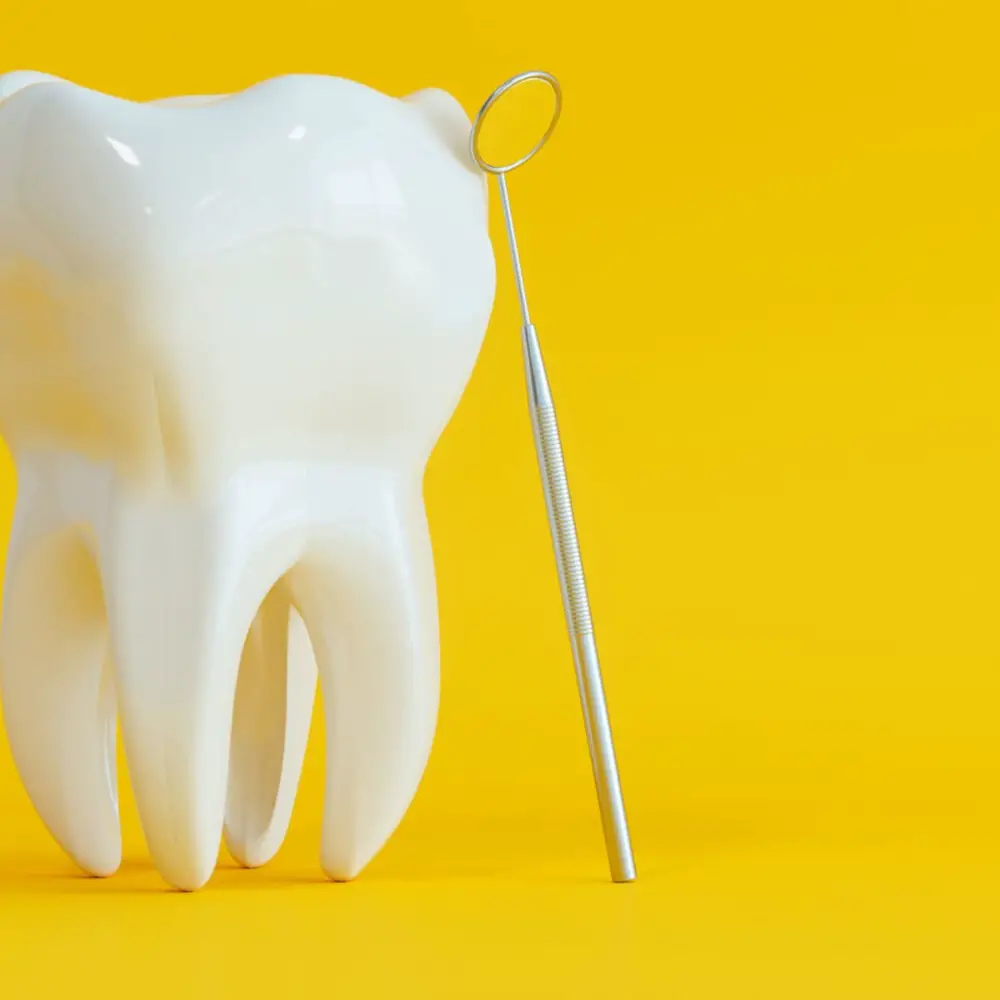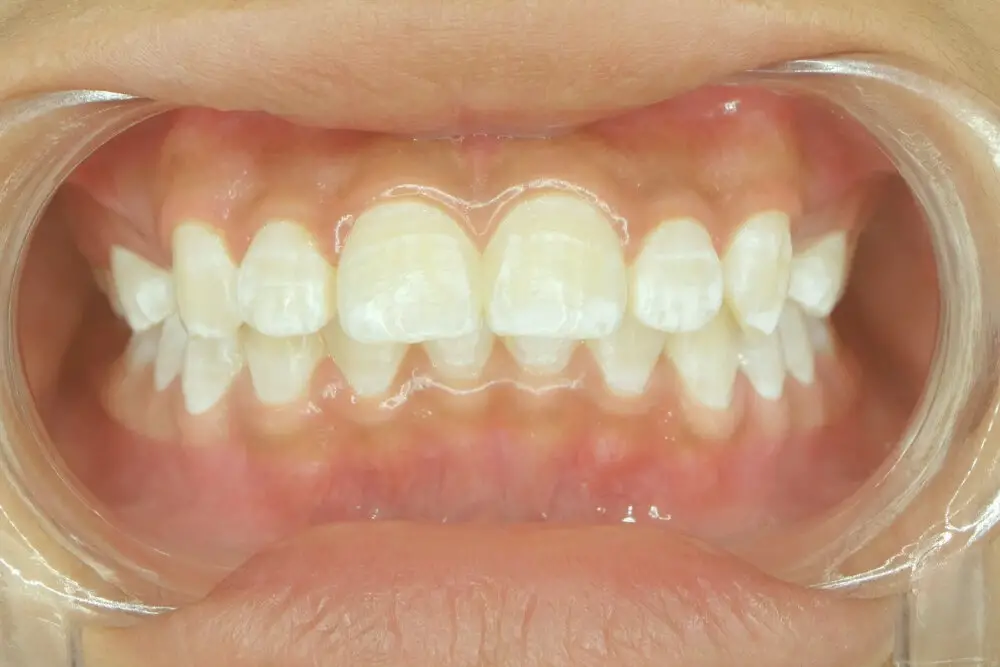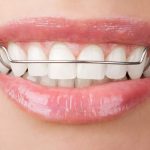Quick Guide: Wisdom Teeth Stitches Dissolving Time

Wisdom teeth, also known as third molars, are the last set of teeth to emerge in the mouth, usually in the late teen or early twenties. These teeth can cause discomfort and pain as they grow, and in many cases, they need to be removed. Wisdom teeth extraction is a common procedure that involves cutting open the gum tissue and removing the teeth from the jawbone. After the surgery, stitches are used to close the wound and promote healing. However, many people are not aware of how long these stitches take to dissolve, which can lead to confusion and anxiety during the recovery process. If you have recently undergone wisdom teeth extraction, understanding the dissolving time of the stitches is crucial for a smooth recovery. The dissolving time of stitches can vary depending on the type of stitches used, the location of the wound, and the individual’s healing process. Dissolvable stitches, also known as absorbable stitches, are commonly used in wisdom teeth extraction surgery. These stitches dissolve on their own over time and do not require removal. However, it is essential to know how long these stitches take to dissolve, as they can affect the healing process and determine when you can resume your normal activities. In this quick guide, we will provide you with all the essential information about wisdom teeth stitches dissolving time to help you better manage your recovery.
Wisdom teeth are the third set of molars that usually emerge between the ages of 17 and 25. These teeth are located at the back of the mouth and can cause a lot of discomfort, pain, and even infection if they do not grow correctly. In some cases, wisdom teeth may need to be removed through a surgical procedure known as extraction. During extraction, your dentist or oral surgeon will make an incision in your gums to access the tooth and remove it. Stitches may be needed to close the incision and promote healing. These stitches are typically dissolvable and will break down on their own after a few days. It is important to follow your dentist’s aftercare instructions to ensure a smooth and speedy recovery.
The dissolving time for stitches is a crucial factor to consider for post-operative care. When wisdom teeth are extracted, stitches are often placed to promote healing and prevent bleeding. Dissolvable stitches are commonly used, and their duration of dissolving can vary depending on the type of surgery performed, the patient’s health, and the location of the stitches. A timely dissolving of stitches is essential for wound healing and to minimize the risk of infection. If the stitches dissolve too quickly, the wound may not heal properly, and if they dissolve too slowly, they may cause irritation and discomfort. Therefore, it is crucial to follow the instructions given by the dentist or surgeon regarding the dissolving time for stitches to ensure a smooth recovery.
Factors Affecting Dissolving Time

The dissolving time of wisdom teeth stitches can be influenced by various factors. One of the most significant factors is the type of suture material used by the dentist. The dissolving time of stitches can vary greatly depending on whether the suture material is made of absorbable or non-absorbable materials. Absorbable sutures will dissolve naturally over time, while non-absorbable sutures must be removed manually by the dentist. The type of suture material used will significantly impact the overall healing time of the patient. Another factor that can influence the dissolving time of wisdom teeth stitches is the patient’s oral hygiene practices. Proper oral hygiene practices can help to speed up the healing process and promote faster dissolving time of the stitches. Patients who fail to maintain good oral hygiene practices, such as brushing and flossing regularly, may experience a slower dissolving time of their stitches due to the buildup of bacteria and debris in the affected area. Additionally, smoking and consuming alcohol can also negatively impact the healing process and prolong the dissolving time of wisdom teeth stitches.
The type of material used for stitches can vary depending on the situation and the doctor’s preference. Common materials include silk, catgut, nylon, and polypropylene. Silk is often used for delicate skin closures, while catgut is a natural material that dissolves over time. Nylon and polypropylene are synthetic materials that are durable and have a low risk of infection. Choosing the right material for stitches is important to ensure proper wound healing and prevent complications such as infection or scarring. It is important to consult with a medical professional to determine the best material for your specific situation.
The location of stitches after wisdom teeth extraction plays an essential role in the healing process. The stitches are placed in the gum tissue where the tooth was removed, and their position depends on the complexity of the extraction. If the tooth was extracted from a simple surgical procedure, the stitches are usually placed on the outer surface of the gum tissue. However, if the extraction was more complex, the stitches might be placed in deeper tissue layers to ensure proper healing. The location of stitches also affects the dissolving time of stitches. Those placed in deeper layers take longer to dissolve, while those on the outer surface will dissolve faster. It is crucial to follow your dentist’s instructions on how to care for the stitches to ensure proper healing and avoid complications.
The healing process after wisdom teeth extraction is a highly individualized experience. While some people may experience minimal discomfort and have their stitches dissolve relatively quickly, others may have a more prolonged and uncomfortable recovery period. Factors such as age, overall health, and the complexity of the extraction procedure all play a role in the healing process. It’s essential to follow your dentist’s post-operative instructions carefully to ensure optimal healing and minimize the risk of complications. Additionally, maintaining good oral hygiene practices and avoiding certain foods can help to promote faster healing and reduce discomfort. Regardless of the individual healing process, it’s important to be patient and take the necessary steps to support your body’s natural recovery process.
Expected Dissolving Time

Wisdom teeth removal is a common dental procedure, and stitches are often used to close the incision after the tooth is extracted. Dissolvable stitches are commonly used in dental procedures, including wisdom teeth removal. These stitches dissolve on their own over time, eliminating the need for a second appointment to remove them. The expected dissolving time for wisdom teeth stitches varies, depending on the type of suture used and the patient’s individual healing process. Generally, dissolvable stitches used in wisdom teeth removal take between one and two weeks to dissolve completely. However, some stitches can take up to three weeks to dissolve. It is important to follow your dentist or oral surgeon’s post-operative instructions to ensure proper healing and the timely dissolution of your stitches. Avoiding certain foods and activities during the first few days after surgery can help prevent the stitches from breaking or coming loose prematurely. In some cases, stitches may fall out or dissolve on their own before the expected dissolving time. If this occurs, it is important to contact your dental professional to ensure that the healing process is progressing as it should. Overall, while dissolvable stitches used in wisdom teeth removal can take some time to dissolve completely, they provide a convenient and effective way to promote healing after dental surgery.
When it comes to wisdom teeth removal, stitches are often used to close the incision and promote healing. However, patients may be concerned about the duration of time they will have to deal with the stitches. In general, stitches used for wisdom teeth removal are designed to dissolve on their own within 7-10 days. This timeframe can vary depending on the type of stitch used, the patient’s individual healing process, and the extent of the surgery. It’s important for patients to follow their dentist’s post-operative instructions to ensure proper healing and to contact their dentist if they experience any unusual pain or discomfort.
When it comes to wisdom teeth removal, stitches are often necessary to promote healing and reduce bleeding. There are two types of stitches that dentists commonly use: dissolvable and nondissolvable. Dissolvable stitches, also known as absorbable stitches, are made of materials that break down over time and eventually dissolve in the body. This means that they do not need to be removed by a dentist or physician. On the other hand, nondissolvable stitches, also known as nonabsorbable stitches, are made of materials such as silk, nylon, or polyester and must be removed by a healthcare professional. The main difference between the two types is that dissolvable stitches are more convenient and eliminate the need for a follow-up appointment to have them removed, while nondissolvable stitches offer greater strength and support during the healing process.
How to Care for Stitches During Dissolving Time

After wisdom tooth removal, stitches are used to hold the gums together to prevent bleeding and promote healing. These stitches are typically dissolvable and will disappear on their own, usually within seven to ten days. However, during this time, it is essential to care for the stitches properly to ensure proper healing and prevent infection. To care for stitches during the dissolving time, it is crucial to keep the mouth clean. Avoid brushing or flossing near the stitches for the first 24 hours after surgery. Afterward, rinse the mouth gently with warm salt water every two to three hours. This will help to keep the area clean and prevent bacteria from forming around the stitches. It is also important to avoid smoking, using straws, and eating hard, crunchy, or spicy foods during the healing process. These activities can disrupt the healing process and cause the stitches to come out before they have fully dissolved. Additionally, it is important to follow any specific instructions provided by the dentist or oral surgeon to ensure proper care and healing.
Proper oral hygiene practices are essential for maintaining healthy teeth and gums. Brushing your teeth twice a day with fluoride toothpaste and flossing daily can help remove plaque and bacteria from your mouth. It is also important to clean your tongue using a tongue scraper or toothbrush to remove any bacteria that may be present. Additionally, using mouthwash can help kill bacteria and freshen your breath. Regular dental check-ups and cleanings are also necessary to catch any dental issues before they become major problems. By implementing these simple oral hygiene practices, you can maintain good dental health and prevent any complications related to your wisdom teeth and stitches dissolving time.
After a wisdom teeth extraction, it is crucial to avoid certain foods and activities to ensure quick and proper healing. Some of the foods that should be avoided include hard and crunchy foods, chewy and sticky foods, and hot and spicy foods. These foods can irritate the extraction site and delay the healing process. Additionally, activities such as smoking, drinking alcohol, and using straws should be avoided as they can cause dry socket and also delay the healing process. It is essential to follow these guidelines to ensure a speedy recovery and avoid any complications.
While wisdom teeth removal is a routine procedure, complications can arise. Signs of complications include excessive bleeding, severe pain, swelling, pus discharge, fever, and difficulty opening the mouth. If you experience any of these symptoms, it is important to contact your dentist immediately. Delaying treatment may lead to further complications and prolong the healing process. Your dentist may prescribe antibiotics or suggest a follow-up appointment to monitor your progress. Remember to follow post-operative instructions carefully to avoid complications and ensure a smooth recovery.
In summary, wisdom teeth stitches are used to close the wound after wisdom teeth extraction surgery. Dissolvable stitches are commonly used, and they typically take between 7 to 10 days to dissolve. During this time, it’s important to maintain good oral hygiene, avoid strenuous activity, and follow the post-operative instructions provided by your dentist or oral surgeon. If the stitches haven’t dissolved after 10 days or if you experience any signs of infection, such as excessive swelling or pain, it’s important to contact your oral surgeon or dentist for further evaluation and treatment. By following these guidelines, you can help ensure a smooth and successful recovery from wisdom teeth extraction surgery.
Following aftercare instructions is crucial for the healing process after wisdom teeth removal. Neglecting or disregarding these instructions can lead to complications such as infection, swelling, and bleeding. It is essential to maintain good oral hygiene by gently brushing and rinsing the mouth with a prescribed mouthwash. Eating soft foods, avoiding smoking, and using ice packs can also aid in the healing process. Moreover, it is crucial to take prescribed pain medications and antibiotics as directed by the dentist. By following these aftercare instructions, the recovery process can be smoother and faster, allowing the patient to return to their daily routine as soon as possible.
It is essential to seek professional help if necessary when it comes to your oral health. If you have undergone wisdom teeth extraction surgery and are experiencing discomfort, bleeding, or swelling, do not hesitate to contact your dentist or oral surgeon. They are experts in the field and can provide you with the necessary care and treatment to ensure a speedy recovery. Delaying treatment can result in further complications, leading to longer healing times and more discomfort. Remember, seeking professional help is a sign of strength and shows that you prioritize your well-being.
Conclusion

In conclusion, understanding the dissolving time of wisdom teeth stitches is essential for a successful post-operative healing process. It is crucial to follow the post-operative care instructions provided by your dentist or oral surgeon to ensure that the healing process goes smoothly. While dissolving time can vary depending on the type of stitch used and the individual’s healing process, it typically ranges from 7-10 days. It is important to maintain good oral hygiene during this time to reduce the risk of infection and promote healing. Remember to be patient and take it easy during the healing process, and don’t hesitate to contact your dental professional if you have any concerns or questions.







